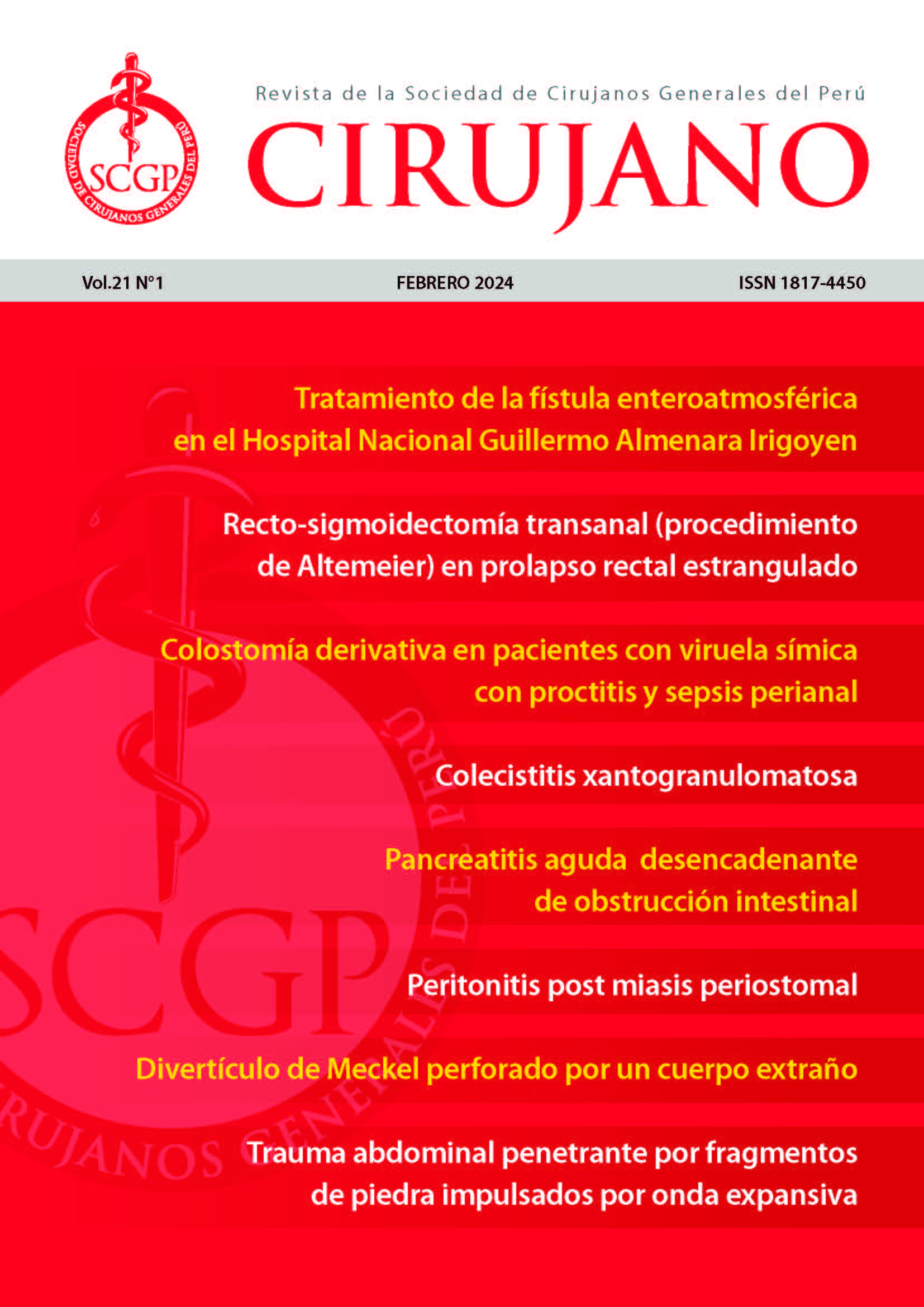Tratamiento de la fístula enteroatmosférica en el Hospital Nacional Guillermo Almenara Irigoyen
Keywords:
enteroatmospheric fistula, open abdomen, abdominal sepsisAbstract
Objective: describe the features and results of the initial management of patients with diagnosis of enteroatmospheric fistula since their admission to the Intestinal Failure Unit at the Hospital Nacional Guillermo Almenara Irigoyen, until their definitive intestinal reconstruction. Materials and methods: this is a series of consecutive cases of patients with a diagnosis of enteroatmospheric fistula (FEA) who were admitted to the Intestinal Failure Unit (UFI), from January 2020 to December 2022. We included patients older than 18 years with FEA referred to the UFI at the Hospital Nacional Guillermo Almenara Irigoyen belonging to the Peruvian Social Security, who were followed up since the index relaparotomy (ReLEi). Open Abdomen type 2C and 4 of Bjork’s classification was considered as FEA. This determined that after ReLEi we had patients with a stoma before the FEA (group A) and patients without a stomam (group B). Evolution, morbidity and mortality until their autologous intestinal reconstruction surgery (CRATGI), were assessed and compared. Data was analyzed with the STATA 11 statistical software. Results: this retrospective study included 14 patients with diagnosis of FEA. The median age was 54.5 years (26–73 years), 75 % were male and 43 % had at least one comorbidity (diabetes, hypertension etc.). ReLEi allowed to construct a stoma before FEA in 3 patients (group A) and this was not possible in 11 patients (group B). Time between intestinal leak and ReLEi was 9.3 days (8–10 days) and 35.9 days (26-66 days) for group A and B respectively. It took 15 days (7-28 days) to obtain a controlled “stoma” from an FEA for group A and 52 days (10-96 days) for group B. In group A (n=3) only 1 patient made it to CRATGI (at 284 days), 1 diedm before CRATGI (sepsis related to CVC) and the other patient was lost to follow-up, whilst in group B (n=11), 8 patients underwent CRATGI after 205 days (in average), after abdominal decontaminating surgery, one patient had a spontaneous closure, 1 died before CRATGI (abdominal sepsis due to failure in controlling the focus) an 1 is waiting surgery as out-patient. Global mortality was 14.3 %. Conclusions: in our patients, construction of a diverting stoma decontaminated the abdomen and allowed a less complex management. An early index relaparotomy allowed us to construct a diverting stoma and positively impact on the management of FEA. Systematization of the management of open abdomen in patients with FEA allowed an orderly and successful treatment with low mortality.
Downloads
Metrics
Downloads
Published
How to Cite
Issue
Section
License
Copyright (c) 2024 Sergio Zegarra Cavani, Eduardo Huamán Egoavil, Jorge Serrano Cardoso, Raúl Yépez Adrianzen, Guillermo Reyes Obando

This work is licensed under a Creative Commons Attribution 4.0 International License.









